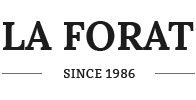നവം . 07, 2024 23:54 Back to list
Understanding the Function and Importance of Lined Check Valves in Fluid Systems
The Importance of Lined Check Valves in Industrial Applications
In various industrial processes, the integrity and reliability of fluid control systems are paramount. Among the critical components that ensure these systems operate smoothly are check valves, particularly lined check valves. These specialized devices play a crucial role in preventing backflow and ensuring the unidirectional flow of fluids, thus protecting equipment and maintaining efficiency.
What is a Lined Check Valve?
A lined check valve is a type of valve that features a protective lining made of corrosion-resistant materials, such as fluoropolymers or rubber. This lining serves as a barrier between the fluid and the valve body, significantly enhancing its resistance to chemical wear and tear. The primary function of a check valve is to allow fluid to flow in one direction while preventing it from flowing backward. This unidirectional flow is vital in preventing back pressure, which can damage pumps and other equipment in a fluid system.
Key Features and Benefits
1. Corrosion Resistance One of the standout features of lined check valves is their ability to resist corrosion. In industries dealing with aggressive chemicals or abrasive materials, standard metal check valves may degrade over time. The protective lining ensures a longer lifespan and reduced maintenance costs, as replacements and repairs are less frequent.
2. Reduced Friction Loss The smooth interior surface of the lining allows for minimal friction losses as fluid flows through the valve. This is especially important in systems where maintaining pressure and flow rates is critical. By optimizing the flow path, lined check valves contribute to enhanced efficiency in operations.
3. Versatility in Applications Lined check valves are incredibly versatile and can be used in a wide range of applications, from chemical processing and wastewater treatment to oil and gas transportation. Their ability to handle various fluids, including corrosive and viscous substances, makes them suitable for diverse industrial environments.
lined check valve

4. Ease of Installation and Maintenance These valves are designed for straightforward installation and typically require minimal maintenance. Their robust construction and durable linings mean that operators can focus on their core tasks without the constant concern of valve-related failures.
5. Safety Features In high-stakes industrial environments, safety is a top priority. Lined check valves help to prevent cross-contamination and ensure that hazardous materials do not leak back into safe zones. This safeguards both the environment and the personnel working in these facilities.
Challenges and Considerations
Despite their numerous advantages, there are challenges associated with lined check valves. For example, the initial cost of acquiring lined valves may be higher than that of standard options. However, when considering the long-term savings on maintenance and replacement costs, investing in lined check valves proves to be economically beneficial.
Additionally, selecting the appropriate lining material is crucial, as different materials are suited for different chemicals and temperatures. This underscores the importance of consultation with engineers or specialists when integrating lined check valves into a system to ensure compatibility with the specific fluids involved.
Conclusion
In conclusion, lined check valves are indispensable components in modern industrial systems. Their robust design, corrosion resistance, and ability to maintain fluid integrity make them essential for applications involving aggressive chemicals and high-pressure systems. As industries continue to evolve and demand higher efficiency and safety standards, the reliance on high-quality lined check valves will only increase. Investing in these innovative solutions not only enhances operational performance but also contributes to safer and more sustainable industrial practices.
Share
-
Reliable Wafer Type Butterfly Valves for Every IndustryNewsJul.25,2025
-
Reliable Flow Control Begins with the Right Ball Check ValveNewsJul.25,2025
-
Precision Flow Control Starts with Quality ValvesNewsJul.25,2025
-
Industrial Flow Control ReliabilityNewsJul.25,2025
-
Engineered for Efficiency Gate Valves That Power Industrial PerformanceNewsJul.25,2025
-
Empowering Infrastructure Through Quality ManufacturingNewsJul.25,2025